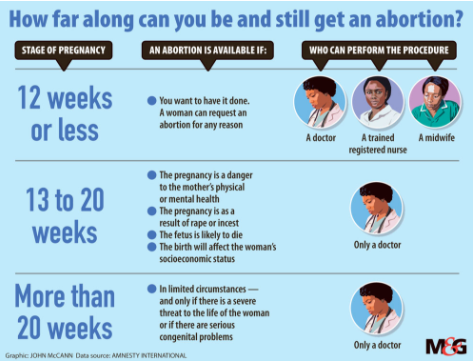Abortion has been legal for more than 20 years in SA but many people still don’t know when or where they can get safe terminations. These can help.
South Africa has one of the most progressive abortion laws on the continent. But more than two decades after landmark 1996 legislation guaranteed all women the right to choose, very few people know their rights under the law.
To bridge this gap, the Bhekisisa Centre for Health Journalism — in partnership with the international communications and advocacy organisation Global Health Strategies — created free-to-use graphics in 11 languages.

These simple charts clearly spell out when a woman can get an abortion, where and who can perform it. These graphics are free to use provided the image is credited and Bhekisisa is notified. (If you find a cool way to use these graphics, let us know by emailing [email protected] so we can share it with others).
Click on the links below to download the graphic in the language of your choice.
Then check out our latest list of sexual reproductive health and rights sources aimed at helping put journalists in touch with reliable experts for stories.
Because a person’s Constitutional right to choose means nothing if they don’t know about it.




